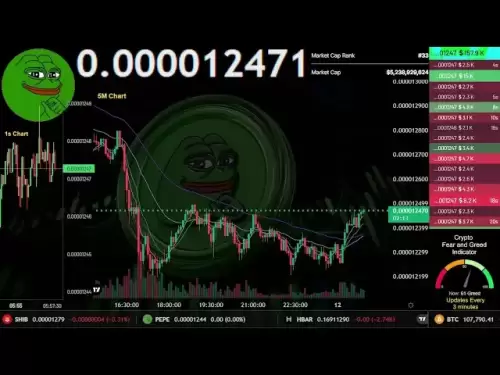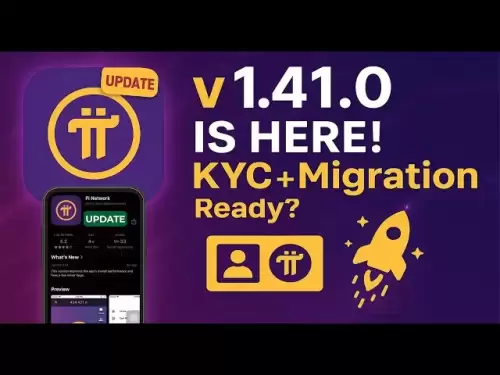-
 Bitcoin
Bitcoin $107,631.9817
-1.73% -
 Ethereum
Ethereum $2,739.1787
-4.61% -
 Tether USDt
Tether USDt $1.0000
-0.01% -
 XRP
XRP $2.2427
-3.30% -
 BNB
BNB $664.0527
-0.73% -
 Solana
Solana $158.0902
-5.38% -
 USDC
USDC $0.9998
-0.01% -
 Dogecoin
Dogecoin $0.1876
-7.78% -
 TRON
TRON $0.2753
-3.21% -
 Cardano
Cardano $0.6820
-5.55% -
 Hyperliquid
Hyperliquid $43.0171
-0.38% -
 Sui
Sui $3.3308
-4.87% -
 Chainlink
Chainlink $14.3431
-7.89% -
 Avalanche
Avalanche $21.0266
-6.48% -
 Bitcoin Cash
Bitcoin Cash $437.7657
-1.56% -
 Stellar
Stellar $0.2746
-2.52% -
 UNUS SED LEO
UNUS SED LEO $8.8665
-1.96% -
 Toncoin
Toncoin $3.1885
-3.37% -
 Shiba Inu
Shiba Inu $0.0...01260
-6.84% -
 Hedera
Hedera $0.1686
-4.93% -
 Litecoin
Litecoin $88.8406
-5.16% -
 Polkadot
Polkadot $4.0542
-6.28% -
 Monero
Monero $322.5806
-4.20% -
 Ethena USDe
Ethena USDe $1.0004
-0.02% -
 Bitget Token
Bitget Token $4.7089
-3.10% -
 Dai
Dai $0.9998
-0.01% -
 Pepe
Pepe $0.0...01206
-9.06% -
 Uniswap
Uniswap $7.8694
-5.20% -
 Pi
Pi $0.6232
-2.68% -
 Aave
Aave $301.3815
-3.83%
Is the double bottom pattern of the time-sharing chart reliable? Is it a short-term buying point or a technical trap?
The double bottom pattern on time-sharing charts can signal a bullish reversal, but traders must confirm with volume and other indicators to avoid technical traps.
Jun 09, 2025 at 01:22 am
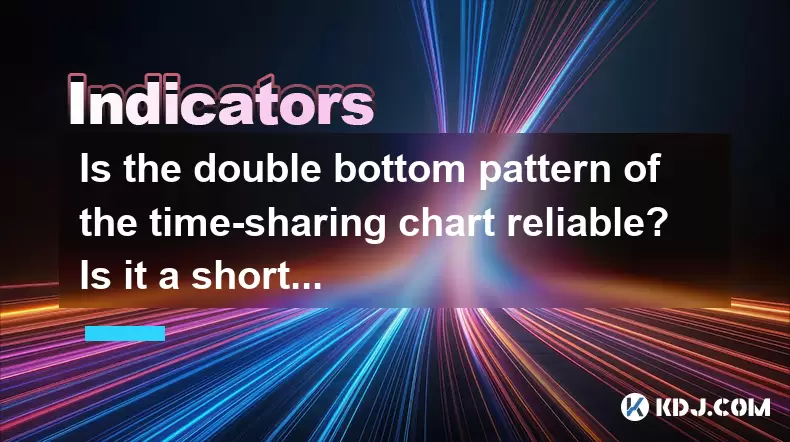
The double bottom pattern is a well-known technical analysis tool in the cryptocurrency trading world, often observed on time-sharing charts. It is characterized by two distinct troughs at approximately the same price level, signaling a potential reversal from a downtrend to an uptrend. Traders frequently debate the reliability of this pattern, particularly whether it serves as a short-term buying point or a technical trap. This article will delve into the intricacies of the double bottom pattern on time-sharing charts, exploring its reliability and potential as a trading signal.
Understanding the Double Bottom Pattern
The double bottom pattern is identified when the price of a cryptocurrency hits a low point, rises, and then falls back to a similar low before eventually rising again. This pattern resembles the letter "W" on a chart and is considered a bullish reversal pattern. It suggests that the selling pressure has exhausted itself, and buyers are starting to take control.
To confirm a double bottom pattern, traders look for several key elements:
- Two troughs: The two lows should be at roughly the same price level, with a peak in between.
- Volume: The volume should be higher on the second trough than on the first, indicating stronger buying interest.
- Breakout: The price should break above the peak between the two troughs, confirming the pattern.
Reliability of the Double Bottom Pattern
The reliability of the double bottom pattern can vary depending on several factors. Market conditions play a significant role; in a strong bull market, the pattern is more likely to lead to a sustained uptrend. Conversely, in a bear market, the pattern might be less reliable and could lead to a false breakout.
Timeframe is another crucial factor. On time-sharing charts, which typically cover short periods such as minutes or hours, the double bottom pattern may be more susceptible to false signals due to the inherent volatility of cryptocurrencies. Longer timeframes, such as daily or weekly charts, tend to provide more reliable signals.
Confirmation signals are essential for increasing the reliability of the double bottom pattern. Traders often use additional indicators such as moving averages, RSI (Relative Strength Index), and MACD (Moving Average Convergence Divergence) to confirm the pattern. A bullish crossover of moving averages or a rise in RSI above 50 can add confidence to the pattern's validity.
Double Bottom as a Short-Term Buying Point
Many traders view the double bottom pattern as a short-term buying opportunity. Once the pattern is confirmed by a breakout above the peak between the troughs, it is considered a signal to enter a long position. The target price for the trade is typically set at the distance from the peak to the troughs added to the breakout point.
For example, if the peak between the troughs is at $10,000 and the troughs are at $9,000, the breakout above $10,000 would signal a potential move to $11,000 ($10,000 + ($10,000 - $9,000)).
However, entering a trade based solely on the double bottom pattern can be risky. Traders should consider the following steps to increase the likelihood of success:
- Wait for confirmation: Ensure the price breaks above the peak with significant volume.
- Set stop-loss orders: Place a stop-loss order just below the second trough to limit potential losses if the pattern fails.
- Monitor other indicators: Use additional technical indicators to confirm the strength of the breakout.
Double Bottom as a Technical Trap
Despite its potential as a buying signal, the double bottom pattern can also serve as a technical trap. This occurs when the pattern appears to form but fails to lead to a sustained uptrend, resulting in a false breakout. Traders who enter positions based on the pattern without proper confirmation can suffer significant losses.
Several factors can contribute to the double bottom pattern being a technical trap:
- Lack of volume: If the volume on the second trough is not significantly higher than the first, it may indicate weak buying interest.
- Premature entry: Entering a trade before the pattern is fully confirmed can lead to losses if the price fails to break above the peak.
- Market manipulation: In the cryptocurrency market, large traders or "whales" can manipulate prices to create false patterns and trap unsuspecting traders.
Identifying and Avoiding Technical Traps
To avoid falling into a technical trap, traders should adopt a cautious approach when using the double bottom pattern. Here are some strategies to help identify and avoid potential traps:
- Confirm with volume: Always check the volume on both troughs and the breakout. A significant increase in volume on the second trough and during the breakout is a positive sign.
- Use multiple timeframes: Analyze the pattern on different timeframes to ensure its validity. A pattern that appears on multiple timeframes is generally more reliable.
- Look for additional signals: Use other technical indicators to confirm the pattern. A bullish divergence on the RSI or a bullish crossover on the MACD can provide additional confirmation.
- Be patient: Wait for the price to break above the peak with strong volume before entering a trade. Premature entry can lead to losses if the pattern fails.
Practical Example of Using the Double Bottom Pattern
To illustrate how to use the double bottom pattern effectively, let's consider a hypothetical scenario involving Bitcoin (BTC). Suppose the time-sharing chart of BTC shows a potential double bottom pattern forming over the course of a few hours.
- First trough: BTC hits a low of $9,500.
- Peak: BTC rises to $10,000.
- Second trough: BTC falls back to $9,500, but with higher volume than the first trough.
- Breakout: BTC breaks above $10,000 with significant volume.
In this scenario, a trader would wait for the breakout above $10,000 before entering a long position. The target price would be set at $10,500 ($10,000 + ($10,000 - $9,500)), and a stop-loss order would be placed just below $9,500 to manage risk.
Frequently Asked Questions
Q1: How can I differentiate between a true double bottom pattern and a false one on a time-sharing chart?
A1: To differentiate between a true and false double bottom pattern, focus on the volume and confirmation signals. A true double bottom should show a higher volume on the second trough and a strong breakout above the peak with significant volume. Additionally, use other technical indicators like RSI and MACD to confirm the pattern's validity.
Q2: Is the double bottom pattern more reliable on certain cryptocurrencies?
A2: The reliability of the double bottom pattern can vary across different cryptocurrencies. Generally, cryptocurrencies with higher liquidity and trading volume, such as Bitcoin and Ethereum, tend to have more reliable patterns. Less liquid cryptocurrencies may be more susceptible to manipulation and false signals.
Q3: Can the double bottom pattern be used for long-term trading?
A3: While the double bottom pattern is often used for short-term trading on time-sharing charts, it can also be applied to longer timeframes like daily or weekly charts for long-term trading. On longer timeframes, the pattern may be more reliable and lead to more sustained trends.
Q4: How should I adjust my trading strategy if the double bottom pattern fails?
A4: If the double bottom pattern fails, it is essential to have a risk management strategy in place. Immediately exit the trade if the price falls below the second trough, and reassess the market conditions. Consider using a smaller position size and tighter stop-loss orders in future trades to minimize potential losses.
Disclaimer:info@kdj.com
The information provided is not trading advice. kdj.com does not assume any responsibility for any investments made based on the information provided in this article. Cryptocurrencies are highly volatile and it is highly recommended that you invest with caution after thorough research!
If you believe that the content used on this website infringes your copyright, please contact us immediately (info@kdj.com) and we will delete it promptly.
- Expert Predicts When Bitcoin (BTC) Price Could Hit a New All-Time High
- 2025-06-13 02:00:20
- US President Donald Trump Virtually Spoke at the Coinbase State of Crypto Summit
- 2025-06-13 02:00:20
- Arctic Pablo Coin (APC) Explodes Onto the Meme Coin Stage as One of the Top New Meme Coins for Exponential Returns
- 2025-06-13 01:55:12
- Litecoin (LTC) Price Nosedives as Bollinger Bands Signal Lingering Bearish Sentiment
- 2025-06-13 01:55:12
- DeFi Development Corp. (DFDV) Secures $5 Billion Equity Line of Credit from RK Capital Management
- 2025-06-13 01:50:12
- Tether Expands Gold Strategy with Stake in Elemental Altus Royalties
- 2025-06-13 01:50:12
Related knowledge
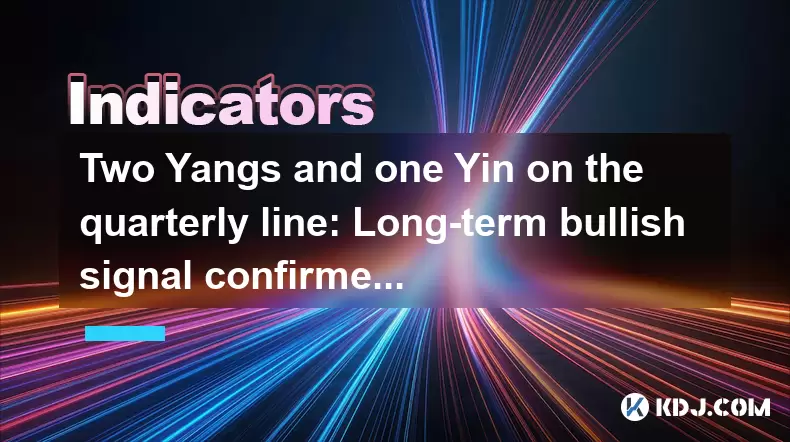
Two Yangs and one Yin on the quarterly line: Long-term bullish signal confirmed?
Jun 12,2025 at 07:00am
Understanding the 'Two Yangs and One Yin' Candlestick PatternIn technical analysis, candlestick patterns play a pivotal role in identifying potential market reversals or continuations. The 'Two Yangs and One Yin' pattern is one such formation that traders often observe on longer timeframes like the quarterly chart. This pattern consists of two bullish (...
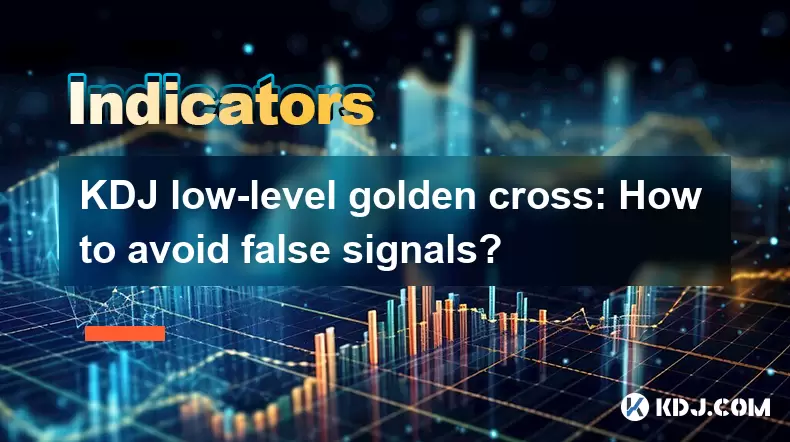
KDJ low-level golden cross: How to avoid false signals?
Jun 12,2025 at 08:21am
Understanding the KDJ IndicatorThe KDJ indicator, also known as the stochastic oscillator, is a momentum-based technical analysis tool widely used in cryptocurrency trading. It consists of three lines: the %K line (fast stochastic), the %D line (slow stochastic), and the %J line (divergence value). These lines oscillate between 0 and 100, helping trader...

Bottom-up volume stagnation: Is it accumulation or heavy selling pressure?
Jun 12,2025 at 01:42pm
What Is Bottom-Up Volume Stagnation?Bottom-up volume stagnation refers to a specific pattern observed in cryptocurrency trading charts where the price of an asset moves sideways or slightly downward, and trading volume remains consistently low over an extended period. This phenomenon is often seen after a sharp price drop or during a prolonged bear mark...
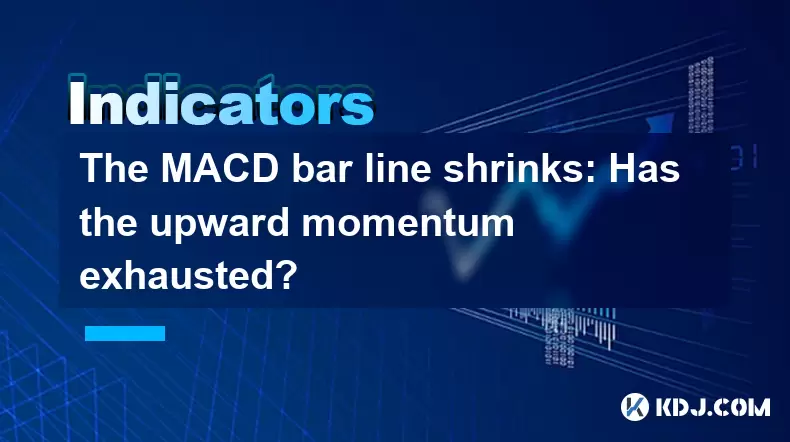
The MACD bar line shrinks: Has the upward momentum exhausted?
Jun 12,2025 at 12:49am
Understanding the MACD Bar LineThe Moving Average Convergence Divergence (MACD) is a widely used technical indicator in cryptocurrency trading. It consists of three main components: the MACD line, the signal line, and the MACD histogram (also known as the bar line). The MACD bar line represents the difference between the MACD line and the signal line. W...

The chip peak moves up: Is the main force quietly shipping?
Jun 12,2025 at 01:01am
Understanding the Chip Peak Movement in Cryptocurrency MiningIn recent years, the chip peak movement has become a critical topic within the cryptocurrency mining community. This phrase typically refers to the point at which mining hardware reaches its maximum efficiency and output capacity. When this peak shifts upward, it often signals changes in the s...
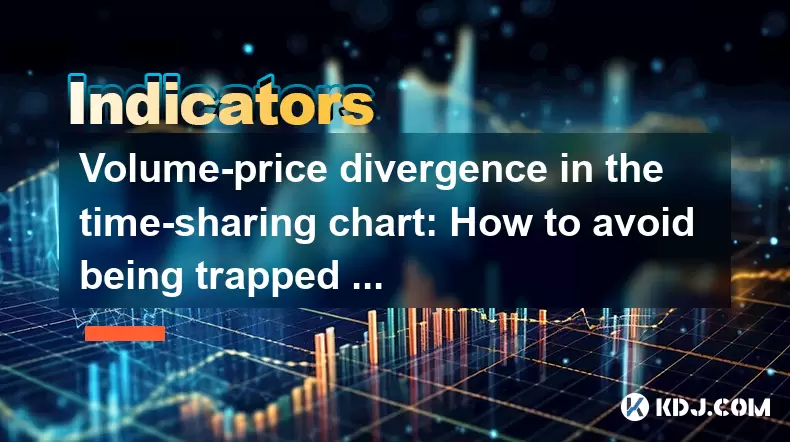
Volume-price divergence in the time-sharing chart: How to avoid being trapped on the same day?
Jun 12,2025 at 07:28pm
Understanding Volume-Price Divergence in Cryptocurrency TradingVolume-price divergence is a critical concept in technical analysis, especially within the fast-moving world of cryptocurrency trading. It refers to a situation where price movement and trading volume move in opposite directions. For instance, if the price of a cryptocurrency is rising while...

Two Yangs and one Yin on the quarterly line: Long-term bullish signal confirmed?
Jun 12,2025 at 07:00am
Understanding the 'Two Yangs and One Yin' Candlestick PatternIn technical analysis, candlestick patterns play a pivotal role in identifying potential market reversals or continuations. The 'Two Yangs and One Yin' pattern is one such formation that traders often observe on longer timeframes like the quarterly chart. This pattern consists of two bullish (...

KDJ low-level golden cross: How to avoid false signals?
Jun 12,2025 at 08:21am
Understanding the KDJ IndicatorThe KDJ indicator, also known as the stochastic oscillator, is a momentum-based technical analysis tool widely used in cryptocurrency trading. It consists of three lines: the %K line (fast stochastic), the %D line (slow stochastic), and the %J line (divergence value). These lines oscillate between 0 and 100, helping trader...

Bottom-up volume stagnation: Is it accumulation or heavy selling pressure?
Jun 12,2025 at 01:42pm
What Is Bottom-Up Volume Stagnation?Bottom-up volume stagnation refers to a specific pattern observed in cryptocurrency trading charts where the price of an asset moves sideways or slightly downward, and trading volume remains consistently low over an extended period. This phenomenon is often seen after a sharp price drop or during a prolonged bear mark...

The MACD bar line shrinks: Has the upward momentum exhausted?
Jun 12,2025 at 12:49am
Understanding the MACD Bar LineThe Moving Average Convergence Divergence (MACD) is a widely used technical indicator in cryptocurrency trading. It consists of three main components: the MACD line, the signal line, and the MACD histogram (also known as the bar line). The MACD bar line represents the difference between the MACD line and the signal line. W...

The chip peak moves up: Is the main force quietly shipping?
Jun 12,2025 at 01:01am
Understanding the Chip Peak Movement in Cryptocurrency MiningIn recent years, the chip peak movement has become a critical topic within the cryptocurrency mining community. This phrase typically refers to the point at which mining hardware reaches its maximum efficiency and output capacity. When this peak shifts upward, it often signals changes in the s...

Volume-price divergence in the time-sharing chart: How to avoid being trapped on the same day?
Jun 12,2025 at 07:28pm
Understanding Volume-Price Divergence in Cryptocurrency TradingVolume-price divergence is a critical concept in technical analysis, especially within the fast-moving world of cryptocurrency trading. It refers to a situation where price movement and trading volume move in opposite directions. For instance, if the price of a cryptocurrency is rising while...
See all articles





















